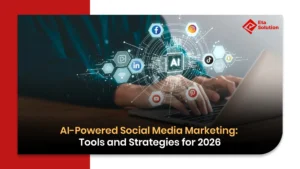
How To Integrate Third-Party Services Into Your WordPress Website?
You’ve got a WordPress website, but let’s be real, just having a site doesn’t cut it anymore. You need functionality, automation, and smooth operations to stay ahead. Enter third-party integrations, the secret sauce that turns an ordinary WordPress site into a revenue-generating powerhouse.
Whether it’s payment gateways, email marketing tools, or CRM systems, integrating external services supercharges your website’s efficiency. And if you’re working with a web development company in Ahmedabad, they’ll tell you that third-party integrations are a must-have for scaling your business online.
But how does it all work? How do you ensure these integrations don’t break your site or slow it down? We’re breaking it all down, step by step.
What is WordPress Third-Party Integration?
Simply put, third-party integration means connecting external services to your WordPress site to enhance its functionality.
Think about this- if WordPress is your car, third-party integrations are the fuel, GPS, and Bluetooth system that make your ride smooth, efficient, and smart.
Popular third-party services for WordPress include:
- Payment gateways (Stripe, PayPal)
- Marketing automation (Mailchimp, HubSpot)
- Analytics & SEO tools (Google Analytics, Rank Math SEO)
- CRM software (Salesforce, Zoho CRM)
Why does this matter? Because over 43.2% of websites worldwide use WordPress (Source: Kinsta). If your competitors are using smart integrations to automate tasks and optimize performance, you can’t afford to be left behind.
Steps to Integrate Third-Party Services into Your WordPress Website
 Why Your WordPress Website Needs Third-Party Integrations
Why Your WordPress Website Needs Third-Party Integrations
You could manually handle email marketing, social media, sales tracking, and payments—or you could let integrations do the work for you.
1. Automate the Boring Stuff
Time is money. Lead management, invoicing, and email follow-ups are crucial but time-consuming. Integrate Zapier with WordPress, and boom—you’ve automated your workflows.
Example:
A real estate business uses a WordPress site for property listings. Instead of manually following up with inquiries, they integrate Zapier + HubSpot. Every time someone fills out a contact form, the data is automatically sent to the CRM. No manual data entry, no missed leads.
2. Boost Website Performance & Speed
Slow websites kill conversions. 53% of users bounce if a site takes longer than 3 seconds to load (Source: Google). Integrating Cloudflare or WP Rocket ensures fast, secure, and smooth performance.
3. Maximize Conversions with AI-Powered Chatbots
Want 24/7 customer engagement without hiring a support team? AI-powered chatbots like Tidio or LiveChat integrate easily with WordPress to capture leads, answer FAQs, and close sales—all on autopilot.
How to Connect Third-Party Apps to WordPress
There are two ways to integrate third-party services into WordPress:
1. Using WordPress Plugins (Beginner-Friendly Approach)
If you’re not a developer, plugins are your best friend. They allow you to integrate external services without touching a single line of code.
Steps to install a plugin for integration:
- Go to WordPress Dashboard → Click Plugins → Add New
- Search for your required integration (e.g., “Google Analytics by MonsterInsights”)
- Click Install Now → Activate
- Configure settings inside the plugin
Example:
Need SEO analytics? Install Rank Math SEO or Yoast SEO and connect Google Search Console in just a few clicks.
2. API Integration (For Developers & Advanced Users)
An API (Application Programming Interface) allows direct communication between WordPress and external services. If you need custom solutions beyond plugins, APIs are the way to go.
Steps to integrate via API:
- Find the API documentation of the service (e.g., Stripe API for payment processing)
- Get your API key from the third-party platform
- Insert API code in WordPress using a custom script or a plugin like WPCode
Example:
If you want to show Instagram feeds dynamically on your website, you can use the Instagram Graph API to fetch and display posts in real-time.
Best Plugins for WordPress Third-Party Integration

Top-rated WordPress plugins for smooth integrations:
- MonsterInsights – Google Analytics for tracking website performance
- WooCommerce Payments – Seamless Stripe and PayPal integration
- Mailchimp for WordPress – Email marketing automation
- WPForms – Connects with CRM tools like HubSpot and Salesforce
- Zapier for WordPress – Automates workflows between different apps
Each of these plugins is trusted by thousands of websites and optimized for performance.
Challenges & Best Practices in WordPress Third-Party Integration
Potential Issues with Integrations & How to Fix Them:
1. Plugin Conflicts
Some plugins don’t play well together, causing errors or website crashes. Solution? Always:
- Test plugins in a staging environment first
- Use well-reviewed plugins only (Check ratings on WordPress Plugin Directory)
2. Security Risks
APIs and third-party tools can be hacking targets.
- Use trusted plugins from the WordPress repository
- Keep all integrations updated to patch vulnerabilities
- Enable SSL encryption and security plugins like Wordfence
3. Slow Website Speed
Too many plugins can slow down your site.
- Use only essential plugins
- Optimize with caching tools like WP Rocket
Automating WordPress with Third-Party Services
If your business isn’t automating workflows, you’re wasting time and money.
Real-World Example: E-commerce Automation
A clothing brand using WooCommerce integrates:
- Google Analytics for customer behavior insights
- Mailchimp for abandoned cart emails
- Zapier to send automatic order confirmations via WhatsApp Business API
The result? Higher conversion rates and less manual work.
The Future of WordPress Third-Party Integrations
AI-powered automation, seamless API connections, and cloud-based integrations will dominate. Businesses that adapt will:
- Increase efficiency
- Enhance user experience
- Drive more sales & engagement
Conclusion: Get Your WordPress Integrations Right!
” An unoptimized & outdated WordPress website is equal to not having one.”
You are letting profits slip through your fingers if your WordPress website isn’t optimized for third-party integrations. Such Integrations save time, improve performance, and raise conversions, whether you’re handling a blog, e-commerce site, or service-based business.
Are you ready to advance your website? Team up with a Web Development Company in Ahmedabad that knows how to smoothly incorporate third-party services.
Make your website a functional and automated powerhouse rather than an old-fashioned digital brochure.
You can integrate third-party services using WordPress plugins, API connections, or custom coding. Many services offer dedicated plugins for seamless integration, while APIs allow for more advanced customization.
Some essential third-party services include Google Analytics (for tracking), Mailchimp (for email marketing), Stripe/PayPal (for payments), Live Chat tools (for customer support), and CRM software (for managing leads). The choice depends on your business needs.
Yes, potential risks include security vulnerabilities, site performance issues, and compatibility conflicts. To minimize risks, always use trusted plugins, keep them updated, and ensure compatibility with your WordPress theme and other plugins.

What started as a passion for marketing years ago turned into a purposeful journey of helping businesses communicate in a way that truly connects. I’m Heta Dave, the Founder & CEO of Eta Marketing Solution! With a sharp focus on strategy and human-first marketing, I closely work with brands to help them stand out of the crowd and create something that lasts, not just in visibility, but in impact!

Industrial Product Marketing with LinkedIn & Paid Ads

Top Digital Marketing Strategies for Industrial Products in 2026

B2B Product Launch Strategies: From Pre-Launch to Go-To-Market

